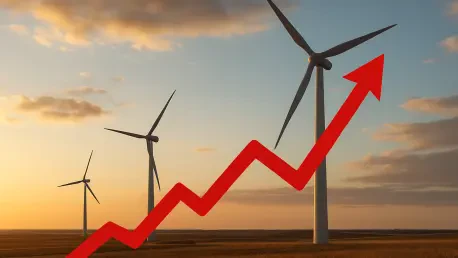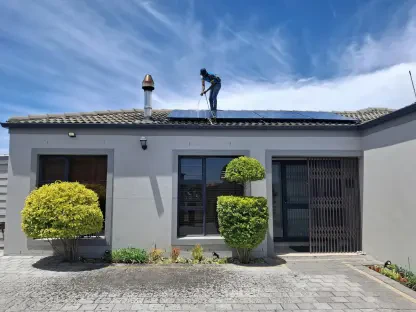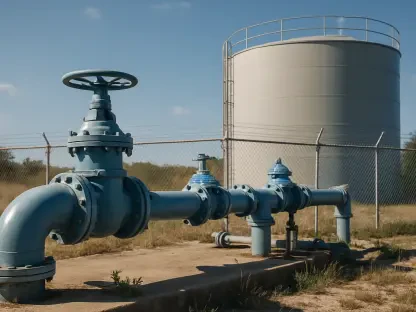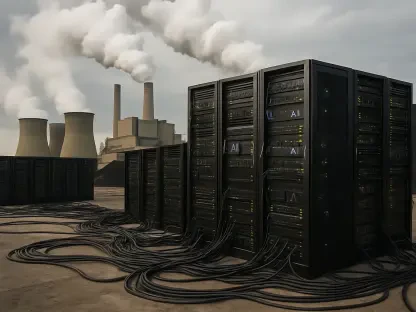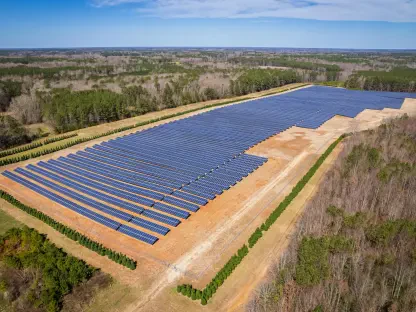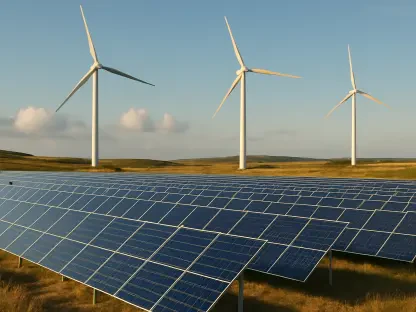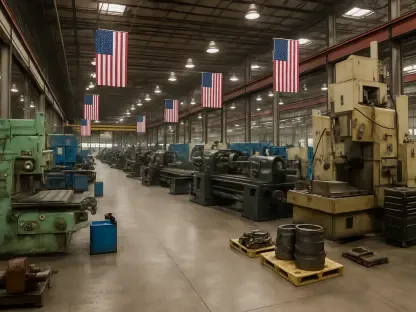In the evolving landscape of renewable energy in North America, a striking trend has emerged: power purchase agreement (PPA) prices for wind energy are climbing at a much faster rate than those for solar, with wind costs spiking nearly 14% annually compared to a more modest increase for solar. Stakeholders are grappling with the implications of this disparity amid a challenging political climate under the Trump administration. This roundup brings together diverse perspectives from industry experts, analysts, and market data to unpack the reasons behind these price surges, explore differing opinions on key drivers, and offer practical insights for navigating the rising costs of clean energy contracts.
Unpacking the Renewable Energy Cost Spike in Today’s Political Climate
The renewable energy sector is facing unprecedented cost pressures as PPA prices for both wind and solar energy trend upward. This escalation is particularly pronounced for wind, creating a ripple effect across corporate sustainability goals and developer plans. Understanding these shifts is critical for stakeholders aiming to balance budgets with clean energy commitments under a politically charged environment marked by tariffs and regulatory changes.
This roundup aims to dissect the unique challenges and dynamics contributing to the cost disparity between wind and solar PPAs. By compiling insights from various industry voices and market analyses, the discussion will highlight policy impacts, market forces, and financing hurdles. The goal is to provide a comprehensive view of the situation and equip buyers and developers with strategies to adapt.
A key focus will be the interplay of external policies and internal market trends shaping these price hikes. From tightened federal permitting rules to soaring corporate demand, the factors at play are complex and multifaceted. This collection of perspectives will shed light on potential solutions and future implications for the renewable energy transition.
Dissecting the Drivers Behind Wind and Solar PPA Price Trends
Wind Outpaces Solar in Cost Escalation
Data from leading energy marketplaces reveals a stark contrast in PPA price trends, with wind costs rising by over $9 per megawatt-hour since last year, reflecting an annual increase of nearly 14%. In comparison, solar PPA prices have seen a more restrained rise of $3.19 per megawatt-hour over the same period. This divergence has caught the attention of industry watchers concerned about wind’s growing cost burden.
Several industry leaders point to intensified pressures on wind projects as a primary reason for this gap. Factors such as supply chain disruptions and regulatory delays are hitting wind harder than solar, driving up costs at a faster pace. These challenges are seen as significant hurdles for developers trying to maintain competitive pricing in a tight market.
Debate persists over whether this trend indicates deeper systemic issues for wind energy or simply reflects temporary market distortions. Some analysts argue that wind’s reliance on specific materials and larger-scale infrastructure makes it more vulnerable to current economic conditions. Others believe that with strategic adjustments, the sector could stabilize, narrowing the cost gap with solar over time.
Policy Headwinds: Tariffs and Permitting Under Trump
Under the current administration, policies such as tariffs on critical materials and stricter federal permitting rules are creating significant obstacles for wind energy projects. These measures have led to increased uncertainty, with many developers facing higher input costs and extended project timelines. Wind initiatives, in particular, seem to bear the brunt of these regulatory shifts.
The real-world impact is evident as some wind projects are being delayed or abandoned due to fears of missing critical deadlines tied to federal tax incentives. Industry voices highlight how these policy barriers are amplifying cost pressures, making it difficult for wind to compete with solar in certain regions. The frustration among developers is palpable as they navigate an unpredictable landscape.
There is also concern about the potential for further policy tightening, which could exacerbate the situation. However, some experts suggest that wind developers might mitigate these impacts by exploring alternative supply chains or pushing for regulatory relief through advocacy. The balance between adaptation and policy reform remains a critical point of discussion for the sector’s future.
Market Forces Tightening the Squeeze on Renewable Costs
Beyond policy, broader market trends are fueling PPA price surges across both wind and solar. Corporate buyers, eager to meet ambitious 24/7 clean energy targets, are driving demand to new heights, creating fierce competition for available projects. This heightened interest is straining supply, especially as fewer tax credit-eligible projects come online.
Regional variations in supply constraints further complicate the picture, with some areas of North America experiencing more acute shortages than others. Analysts project that these pressures are unlikely to ease until at least mid-2026, keeping PPA costs elevated for the foreseeable future. This outlook poses challenges for stakeholders planning long-term energy strategies.
Questions remain about whether demand alone is the dominant force behind rising prices. Some industry perspectives suggest that financing bottlenecks and competition from other infrastructure needs, such as data centers, could be equally significant contributors. This layered complexity underscores the need for a nuanced approach to understanding cost drivers in the renewable space.
Financing Woes and Future Tariff Threats
Rising borrowing costs have emerged as a major concern for renewable energy developers, with some industry analysts identifying financing pressures as a leading cause of current PPA price increases. The urgency to complete projects before looming tax incentive deadlines, combined with competing demands from other sectors, has strained available capital, pushing up costs for wind and solar alike.
Contrasting views exist on the role of tariffs in this equation. While some experts believe that many recent PPAs include clauses to adjust for potential tariff hikes, minimizing immediate impacts, others warn that newly announced tariffs could still drive prices up by 10-15% in the near term. This uncertainty is shaping how developers structure contracts and approach risk.
Speculation abounds on how these dual challenges of financing and tariffs might influence future strategies. Developers may need to rethink project timelines or explore innovative funding models, while buyers could face tougher negotiations to secure favorable terms. The evolving financial landscape is poised to test the resilience of the renewable sector in the coming months.
Key Insights and Practical Strategies for Navigating Rising Costs
Synthesizing the varied perspectives, it is clear that wind PPA prices are escalating faster than solar, driven by a combination of policy barriers, surging market demand, and financing challenges. The nearly 14% annual increase for wind starkly contrasts with solar’s more moderate rise, creating a pressing need for strategic responses from industry players. These cost trends are reshaping how stakeholders approach clean energy commitments.
For those navigating this turbulent market, actionable steps include securing long-term PPA contracts now to hedge against further price hikes. Exploring hybrid wind-solar deals could also offer a balanced approach to managing costs while meeting energy goals. Additionally, advocating for clearer policies on tariffs and permitting might help alleviate some of the external pressures currently impacting the sector.
Corporate buyers and developers are encouraged to evaluate PPA value against wholesale energy prices to ensure cost-effectiveness amid uncertainty. Conducting thorough market assessments and prioritizing flexibility in contract terms can provide a buffer against unforeseen cost escalations. These strategies aim to empower stakeholders to make informed decisions in a volatile environment.
Looking Ahead: The Future of Renewable PPA Prices
Reflecting on the insights gathered, the complex interplay of political decisions and market dynamics has profoundly shaped the renewable energy landscape. Wind faces steeper challenges than solar, with policy-driven hurdles like tariffs and permitting delays compounding market and financing pressures. The diversity of opinions on these drivers underscores the intricate nature of the cost surge witnessed in North America.
Moving forward, stakeholders should consider focusing on innovation and collaboration to address these rising costs. Exploring new supply chain solutions, advocating for balanced regulatory frameworks, and investing in hybrid energy projects could offer pathways to stability. These steps, grounded in the lessons learned, provide a foundation for mitigating future disruptions.
Additionally, staying informed about policy developments and market trends will be crucial for anticipating shifts in PPA pricing. Engaging with industry networks to share best practices and push for supportive reforms might further strengthen the renewable sector’s resilience. These proactive measures aim to ensure that the momentum toward clean energy adoption continues despite the challenges encountered.
